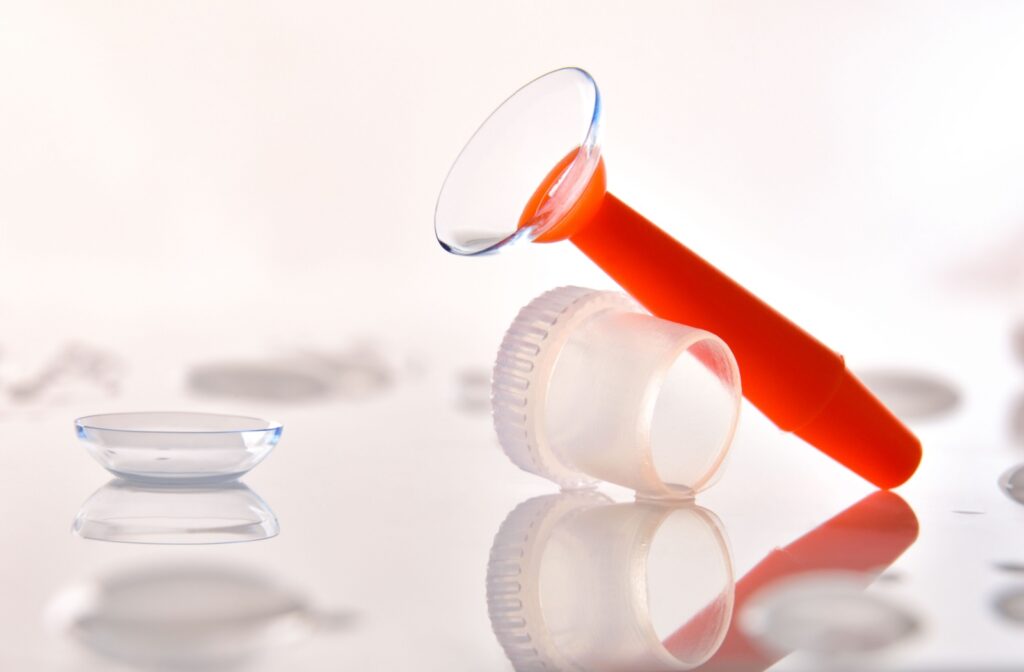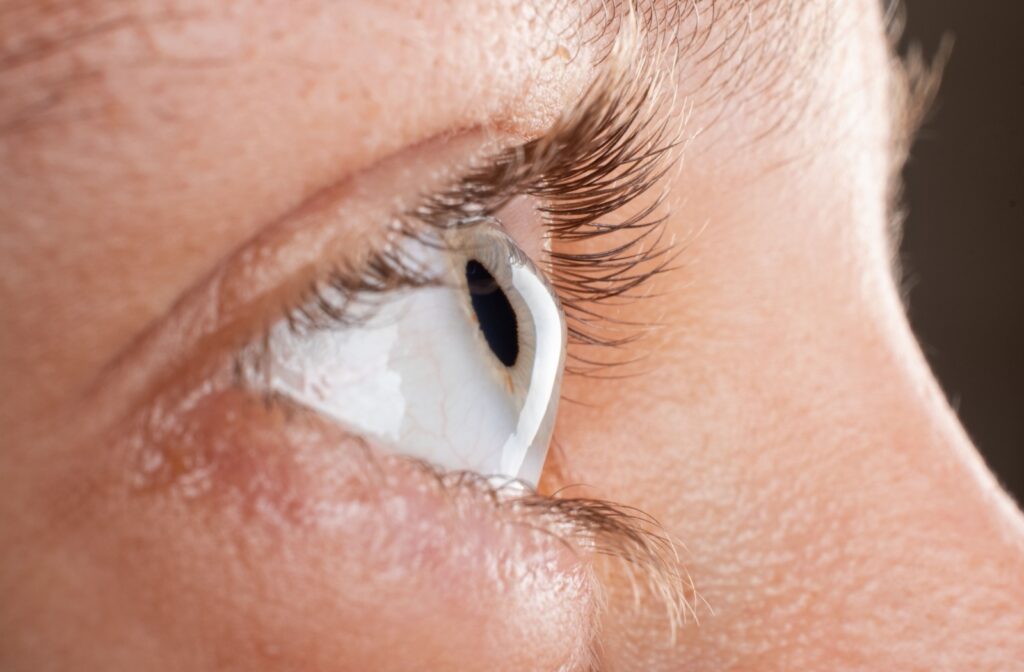Contact lenses have evolved beyond everyday vision correction. For people with complex eye needs—such as dry eye, keratoconus, or irregular corneas—scleral contact lenses may offer comfort, clarity, and stability that traditional lenses can’t match.
Unlike regular contacts that sit directly on the cornea, scleral lenses are larger and rest on the white part of the eye, called the sclera. This unique fit creates a fluid-filled space that hydrates the eye and provides a smooth optical surface for clear vision.
While Northern Lights Eyecare does not provide scleral lens fittings, trials, or training, we may recommend them based on your eye health and vision needs. In those cases, we’ll refer you to our trusted partner clinic in Saskatoon, Broadway Eyecare, where scleral lens fittings and care are provided.
What Are Scleral Contact Lenses?
Scleral lenses may look similar to other contacts at first glance, but their size and purpose are much different. These custom-designed, gas-permeable lenses are larger than average and are built to vault over the cornea without touching it.
This design creates a reservoir of sterile fluid between the lens and the eye, offering hydration and protection, something soft or rigid gas-permeable (RGP) lenses don’t provide. The size and fit make them an excellent choice for patients with irregular corneas, dry eye disease, or post-surgical eye changes.
Because they don’t make contact with the corneal surface, scleral lenses are often more comfortable for those with sensitive eyes or past lens intolerance.
How Is a Scleral Lens Different from a Regular Lens?
Understanding the differences between scleral and traditional lenses can help you see why they’re often recommended in more complex cases:
Size
Standard soft contacts are typically 13-14 mm in diameter. Scleral lenses start at around 15 mm and can reach up to 24 mm. Their increased size helps them rest securely on the sclera and cover a larger surface area of the eye.
Fit
Traditional lenses sit on the cornea, which can be sensitive or irregularly shaped. Scleral lenses vault over the cornea entirely and rest on the sclera, providing greater stability and less irritation.
Hydration
Scleral lenses create a sealed chamber filled with saline solution, which keeps the cornea hydrated throughout the day. This is particularly helpful for those with chronic dry eye or corneal damage.
Vision Correction
While soft lenses can correct common refractive errors, scleral lenses are designed to provide crisp, stable vision in patients with conditions like keratoconus, scarring, or high astigmatism that make standard correction difficult.

Benefits of Scleral Lenses
Scleral lenses don’t just fit differently—they provide distinct benefits for a variety of eye conditions. Here’s how they can help:
Keratoconus
This progressive condition causes the cornea to thin and bulge, distorting vision. Scleral lenses vault over the irregular shape and create a smooth surface, offering improved clarity and comfort that soft lenses often can’t match.
Dry Eye Disease
Patients with severe dry eye often struggle with lens comfort. The fluid layer beneath scleral lenses provides continuous moisture, helping relieve irritation and improve overall comfort throughout the day.
High or Irregular Prescriptions
If you have high levels of nearsightedness, farsightedness, or astigmatism that aren’t well-corrected by glasses or soft contacts, scleral lenses offer better optical performance and stability.
Post-Surgical or Damaged Corneas
After corneal surgery or injury, traditional lenses may no longer fit well. Scleral lenses can protect the healing eye while restoring vision and preventing further irritation.
What to Expect with a Scleral Lens Fitting
Because of their complexity, scleral lenses require a specialized fitting process that ensures the lenses align with your unique eye shape and vision needs.
While Northern Lights Eyecare does not perform scleral lens fittings or training, we frequently refer patients to Broadway Eyecare in Saskatoon, where experienced optometrists handle the full process.
At Broadway Eyecare, your fitting may include:
- Evaluation of your eye health and corneal shape
- Taking of precise measurements for a custom lens design
- Providing of trial lenses to test comfort and vision
- Teaching you how to apply, remove, and care for your lenses
Our goal at Northern Lights is to help you find the right solution for your vision needs, and when scleral lenses are the right fit, we’ll make sure you’re in good hands with our partner clinic.
Explore Specialty Contact Lenses in Prince Albert
Scleral lenses can make a real difference if standard contacts haven’t worked for you—or if you’ve been diagnosed with a more complex eye condition.If you’re curious about whether scleral lenses might be right for you, reach out to our team at Northern Lights Eyecare in Prince Albert. We can help assess your eye care needs and refer you to Broadway Eyecare in Saskatoon if scleral lenses are a potential solution.


